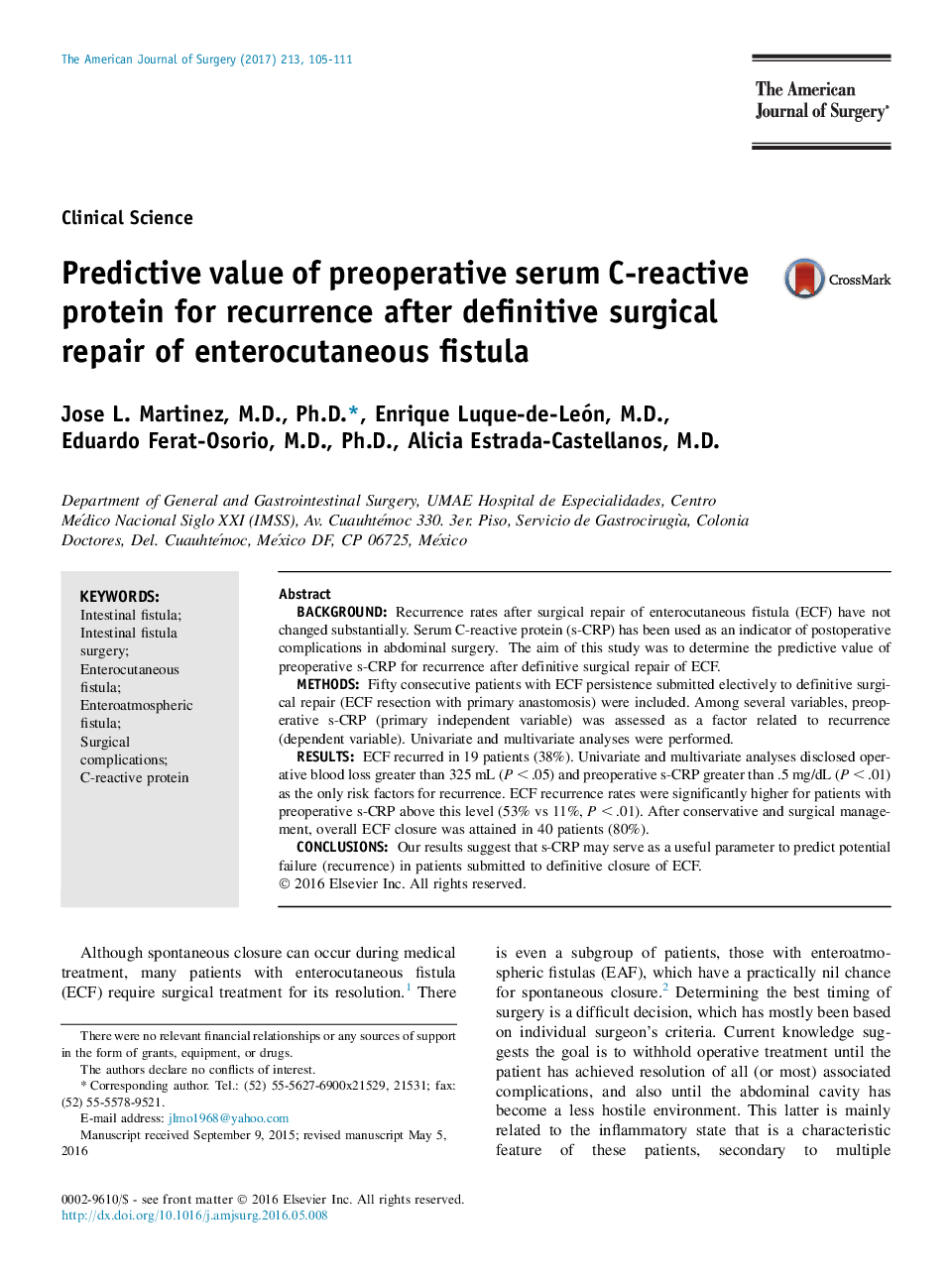| Article ID | Journal | Published Year | Pages | File Type |
|---|---|---|---|---|
| 5731172 | The American Journal of Surgery | 2017 | 7 Pages |
â¢Recurrence rates after surgical repair for enterocutaneous fistula (ECF) have not changed.â¢Serum C-reactive protein (s-CRP) has been used as an indicator of postoperative complications.â¢Fifty consecutive patients with ECF submitted electively to definitive surgical repair.â¢ECF recurrence was higher with preoperative s-CRP above .5 mg/dL (53% vs 11%, P < .01).â¢s-CRP may serve as a parameter to predict recurrence after definitive closure of ECF.
BackgroundRecurrence rates after surgical repair of enterocutaneous fistula (ECF) have not changed substantially. Serum C-reactive protein (s-CRP) has been used as an indicator of postoperative complications in abdominal surgery. â The aim of this study was to determine the predictive value of preoperative s-CRP for recurrence after definitive surgical repair of ECF.MethodsFifty consecutive patients with ECF persistence submitted electively to definitive surgical repair (ECF resection with primary anastomosis) were included. Among several variables, preoperative s-CRP (primary independent variable) was assessed as a factor related to recurrence (dependent variable). Univariate and multivariate analyses were performed.ResultsECF recurred in 19 patients (38%). Univariate and multivariate analyses disclosed operative blood loss greater than 325Â mL (P < .05) and preoperative s-CRP greater than .5Â mg/dL (P < .01) as the only risk factors for recurrence. ECF recurrence rates were significantly higher for patients with preoperative s-CRP above this level (53% vs 11%, P < .01). After conservative and surgical management, overall ECF closure was attained in 40 patients (80%).ConclusionsOur results suggest that s-CRP may serve as a useful parameter to predict potential failure (recurrence) in patients submitted to definitive closure of ECF.
